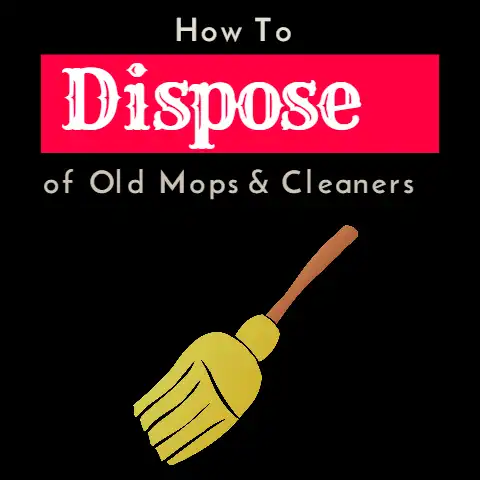Is Hot Mop Toxic (Safety Concerns)
What if one day you’re planning a
bathroom renovation, and you hear the term
“hot mop”? The mere mention might conjure
up images of steamy floors and strange fumes,
and frankly, it can be a bit intimidating. As
someone who’s worked extensively in this area,
I want to break it down for you. We’ll talk about
what hot mop is, why it’s used, and most
importantly, whether it’s safe to use.
Understanding Hot Mop: A Deep Dive
Hot mopping is an age-old technique used
to waterproof surfaces like shower pans and
flat roofs. It involves applying layers of hot
liquid asphalt combined with felt paper. While
it’s highly effective in preventing water leaks,
it does come with concerns about safety and
toxicity.
The Science Behind Hot Mop
Before we dive into safety, let’s talk about how
hot mop works. The key here is in the layers:
asphalt acts as a sealant while the felt paper
provides structural integrity. This combination
creates a robust barrier against water.
I’ve seen this method used in many commercial
buildings and homes over the years. It’s durable
and reliable, but there’s more to it than just
laying down hot tar. Understanding what happens
when asphalt is heated can explain why some
people have concerns about toxicity.
Why Use Hot Mop?
You might ask, “Why should I consider using hot
mop over other methods?” Well, from my experience,
hot mop provides a level of durability that’s hard to
match. Its unique ability to adapt to the shape of
the underlying surface makes it ideal for tricky areas
like shower floors or uneven roof sections.
Personal Story: My First Encounter with Hot Mop
I remember my first time dealing with hot mop. I was
working on a bathroom renovation project for a friend.
They had heard about the benefits of hot mopping for
waterproofing and wanted to give it a try. I was eager
to help but also slightly apprehensive about working
with heated asphalt and the fumes it might release.
As I walked into the room where the hot mop was being
applied, the smell hit me immediately—sharp and industrial.
It was unlike anything I’d experienced before. My initial thought was, “Is this safe for us to be breathing?”
But as I continued with the project, I learned how to manage the process safely. Ventilation became my best friend, and protective gear was essential. That project taught me valuable lessons that I’ll share with you here.
Potential Health Concerns: What You Need to Know
When you heat asphalt, it releases fumes that can irritate your eyes, nose, and throat. It’s not uncommon to feel a slight discomfort if you’re unprepared or in an enclosed space without proper ventilation.
Health Impacts of Asphalt Fumes
The key compounds in asphalt fumes include various hydrocarbons that can cause irritation. In rare cases of long-term exposure without protective measures, they might pose more serious health risks. However, under normal use with proper precautions, these risks are minimal.
I’ve been around hot mop jobs countless times, and while the initial smell can be overwhelming, following safety protocols makes all the difference.
Common Concerns: Addressing Fears
- Will the Fumes Affect My Health Long-term?
- Short-term exposure is typically harmless if you take precautions. Always ensure good ventilation and wear protective gear.
- What About My Pets and Kids?
- If you have pets or small children, it’s best to keep them away from the area until the smell dissipates.
Safety Precautions: Protecting Yourself and Others
Safety should always be your top priority when working with materials like hot asphalt. Here’s what I recommend based on my experience:
Proper Ventilation: A Must
Ensure that the work area is well-ventilated. Open windows and doors to allow fresh air in and fumes out. Consider using fans or exhaust systems if available.
Personal Protective Equipment (PPE)
Wearing appropriate PPE is crucial:
- Masks/Respirators: To prevent inhalation of fumes.
- Gloves: To protect your hands from hot materials.
- Safety Goggles: To shield your eyes from splashes or fumes.
In one memorable project, we forgot to bring sufficient masks for the team. We quickly realized our mistake when we started feeling throat irritation—lesson learned! Now, extra masks are always on my checklist.
Limiting Exposure Time
It’s wise not to linger too long in the area where hot mop is being applied. Take regular breaks and step outside if needed.
Materials Needed for Hot Mop Application
If you’re considering doing a hot mop job yourself or hiring professionals, here’s what you’ll need:
- Hot Tar Kettle: Essential for heating asphalt.
- Felt Paper Layers: These are laid between asphalt coats.
- Rollers/Brushes: For spreading asphalt evenly.
- Protective Gear: Masks, gloves, goggles.
Preparation Steps Before Starting
- Gather Materials: Double-check that you have everything ready before starting.
- Check Equipment: Ensure all tools are in working condition.
- Plan Ventilation: Set up fans or open windows ahead of time.
- Lay Out Protective Gear: Make sure everyone involved has access to PPE.
Common Mistakes to Avoid
Even seasoned professionals can make mistakes during hot mop applications. Here are some pitfalls I’ve learned to avoid:
Skipping Protective Gear
This is probably the most common error—and one of the most dangerous. Always wear your gear; it’s not worth risking your health.
Ignoring Ventilation
Never underestimate the importance of good airflow. Without it, fumes can build up quickly, making the environment unpleasant and potentially hazardous.
Rushing Through Layers
Take your time with each layer of felt paper and asphalt to ensure even coverage and adhesion.
Step-by-Step Hot Mop Process: A Detailed Guide
- Preparation Phase
- Gather all materials and equipment.
- Plan for ventilation.
- Set up your workspace safely.
- Heating Asphalt
- Use the hot tar kettle carefully.
- Keep an eye on temperature settings.
- Avoid overheating to prevent scorching.
- Applying Layers
- Start with a base layer of felt paper.
- Use rollers to spread asphalt evenly.
- Add subsequent layers as needed.
- Final Layer
- Finish with a top coat for sealing.
- Inspect for any missed spots or imperfections.
Tips for a Smooth Application
- Work methodically from one end to the other.
- Maintain consistent pressure on rollers for even distribution.
- Allow each layer time to cool slightly before adding the next.
Clean-Up and Finishing Procedures
Once your hot mop application is complete, proper cleanup is essential:
Cooling Period
Allow ample time for the area to cool before walking on it or adding any additional materials.
Tool Cleaning
Clean tools immediately after use while the asphalt is still pliable.
Waste Disposal
Dispose of any leftover materials according to local regulations—never pour unused asphalt down drains or in regular trash bins.
Safety Considerations: More Than Just Fumes
While we’ve focused a lot on fumes, let’s not forget about heat risks:
- Always handle heated equipment with care.
- Be cautious around open flames if using a tar kettle.
In one instance, I absentmindedly touched a hot tool without gloves—ouch! Luckily it was minor, but it reminded me always to stay vigilant.
Addressing Environmental Concerns
Beyond personal safety, we should also consider environmental impacts:
Eco-Friendly Alternatives
Some newer products offer similar waterproofing abilities without as many harmful emissions—worth exploring if you’re environmentally conscious.
Sustainable Practices
Consider recycling used materials where possible and opt for products with eco-friendly certifications.
FAQs: Common Concerns Addressed
Is Hot Mop Safe for Indoor Use?
Yes, when applied correctly with proper safety measures in place.
How Long Does the Smell Last?
Typically fades within hours if well-ventilated; may linger longer in enclosed spaces.
Can I Do It Myself?
If you’re handy and follow all precautions closely—you might be able to tackle this as a DIY project; otherwise hiring professionals ensures safety & quality results!
Through careful planning & execution combined with vigilant attention paid towards both human health & environmental considerations alike—you’ll achieve successful outcomes using hot mop techniques safely!






